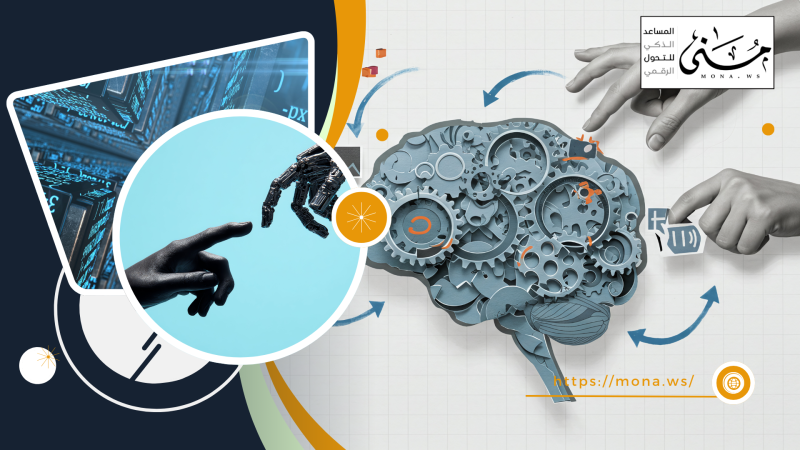Administrative automation is one of the most important elements of digital transformation in modern institutions, as it effectively contributes to improving the performance of administrative processes, and reducing the time and effort spent on routine tasks, which leads to increased productivity and reduced human errors.
You can continue reading the article to find out more information.
The concept of administrative automation and its impact on institutional performance
Administrative automation is defined as the process of using modern technologies and smart systems to simplify and improve the performance of administrative processes within institutions and companies. Automation aims to reduce human intervention in the implementation of repetitive routine tasks, which contributes to raising work efficiency, reducing errors, and accelerating the completion of operations.
Administrative automation involves the use of software and technology solutions to handle processes such as document management, meeting scheduling, reporting, order processing, and workflow tracking. Administrative automation is based on the principle of automating procedures that previously relied on manual human efforts, such as processing paperwork or data entry.
Administrative automation tools such as:Microsoft Power Automate, Zapier, and DOCSUITE help simplify everyday tasks like automatically sending emails or organizing appointments, making your organization more efficient.

Important statistics about administrative automation
Several studies have shown that implementing administrative automation can lead to:
- Increase productivity by 20-30% in many organizations.
- Reduce human error by 50% in activities that require high accuracy such as data entry and billing.
- Improve customer response time by 40% through customer service automation.
These statistics clearly show how automation not only improves speed but also improves the accuracy of operations.
The development of administrative automation and its role in digital transformation
Over time, the tools used in administrative automation have evolved rapidly. Initially, the tools were limited to simplifying repetitive tasks, but now they are being integrated into broader strategies for digital transformation in organizations. This includes using technologies such as artificial intelligence and machine learning to continuously improve processes.
Modern tools such asRoboTask, Monday.com, and Docsuite offer significant benefits in accelerating workflow and increasing coordination between different teams within an organization, enhancing productivity and efficiency.
The importance of administrative automation
Administrative automation plays a fundamental role in improving institutional performance and enhancing work efficiency, making it an indispensable part of the modern business environment. Its importance lies in:
Improve productivity
By automating repetitive, routine tasks, such as data entry, reporting, and meeting scheduling, employees' time and effort are freed up to focus on more strategic work, improving efficiency and increasing the overall productivity of the organization.
Reduce human error
Errors resulting from human intervention can be costly and impact organizational performance, and administrative automation provides precise systems that follow specific procedures to minimize the possibility of error.
Save time and costs
Administrative automation helps reduce the time spent on manual processes, which translates into lower operational costs.
Enhance work flexibility and decision making
Automating administrative processes enables organizations to quickly adapt to market and environmental changes, providing immediate and accurate data for informed decision-making. Having programmed systems that allow monitoring of processes helps managers track performance and make adjustments quickly and effectively.
Improve customer experience
Administrative automation enhances the customer experience by accelerating response to their needs and improving the quality of services provided.
Promoting digital transformation
Automating administrative processes is one of the main pillars of digital transformation, as it enables organizations to move from the traditional paper-based system to a modern electronic environment.
Strengthening cyber security
Automated systems often include multiple layers of protection, such as data encryption and two-factor authentication procedures, which help protect sensitive data from unauthorized access or breaches.
Challenges of Administrative Automation
Despite the great benefits of administrative automation, there are some challenges that organizations may face when implementing these systems, such as:
high costImplementing automation may require a significant initial investment in tools and software.
internal resistanceEmployees may face resistance to digital transformation due to fear of losing their jobs or not adapting to new tools.
Integration with existing systemsDifficulty integrating automation with legacy systems can be a barrier in some cases.
Administrative automation is not just a tool for improving efficiency, but it is an essential step towards achieving complete digital transformation in organizations. By adopting these tools, organizations can improve performance, reduce costs, and increase their flexibility in the face of future challenges. Although there are some challenges in implementing automation, its long-term benefits justify the investment in it.
Challenges facing organizations in implementing administrative automation
Despite the great benefits of administrative automation, there are some challenges that organizations may face when implementing these technologies. One of the most prominent challenges is employee resistance to change, as some may feel anxious about losing their jobs as a result of the shift to automated processes.
To overcome this problem, employees must be made aware of the benefits of automation that will contribute to improving the work environment and saving time to focus on value-added tasks. Organizations may also face challenges in choosing the appropriate technological tools that match their needs, in addition to the problem of integrating old systems with modern systems.
Therefore, it is important for organizations to plan well before they begin implementing automation, and ensure that the technologies they choose support their long-term goals.
Top Administrative Automation Management Tools
Administrative process automation tools include systems and technologies that improve administrative performance, reduce human errors, and increase productivity, including:
Routine process automation tools (RPA - Robotic Process Automation)
Used for automationRepetitive administrative tasks such as data entry and routine order processing.
Key tools: UiPath,Automation Anywhere,Blue Prism.
Document management systems (DMS - Document Management Systems)
It helps in storing, organizing, and retrieving digital documents efficiently, facilitating effective data management.
Key tools: DocuWare,SharePoint,M-Files.
Workflow management systems (Workflow Management Systems
Focuses on improving workflow, automating administrative tasks, and coordinating processes across different teams.
Key tools: Kissflow,Nintex,Asana.
Enterprise Resource Management Systems (ERM)ERP - Enterprise Resource Planning)
Administrative processes such as accounting, human resources, and supply chain management are integrated into a unified system to make work easier.
Key tools: SAP,Oracle NetSuite,Microsoft Dynamics.
Data Management and Analytics Systems (Data Analytics Tools)
It is used to analyze big administrative data and extract insights that support strategic decision making.
Key tools: Power BI,Tableau,Google Data Studio.
(DocSuite)
A comprehensive system that manages documents, organizes administrative communications, and contributes to automating administrative processes with flexibility and ease. Designed to simplify routine operations in institutions and enhance their operational efficiency, the system contributes to automating administrative processes through advanced tools that facilitate workflow, allowing employees to focus on strategic activities instead of repetitive tasks.
DocSuite provides comprehensive solutions that include automation of archiving and document classification,andManage workflow efficiently,andPrepare accurate reports and secure data with advanced cybersecurity technologies.And,It also supports integration with other systems such as:ERP and RPA, making it an ideal choice for achieving digital transformation and enhancing productivity in organizations.

How can the success of administrative automation be measured?
Measuring the success of administrative automation is a crucial step to ensuring that the investment in these technologies has achieved the desired results. Some of the most prominent indicators that can be used to evaluate performance after implementing automation are: increased productivity, reduced operating costs, reduced human errors, and improved customer satisfaction.
Organizations can also use analytics tools to periodically monitor workflow and identify areas that need improvement. In general, the results of automation should be measured based on the organization's strategic goals and how it impacts efficiency and innovation.
Administrative automation is essential to achieving efficiency and enhancing productivity in organizations. Advanced systems contribute to simplifying document management and organizing processes effectively, which supports accurate analysis and data protection. Investing in automation is no longer an option, but an urgent need to keep pace with changes and achieve strategic goals with flexibility and efficiency in a competitive work environment.
 الأتمتة الإدارية: تعزيز الإنتاجية وتقليل الأخطاء
الأتمتة الإدارية: تعزيز الإنتاجية وتقليل الأخطاء





Comments
Add New Comment